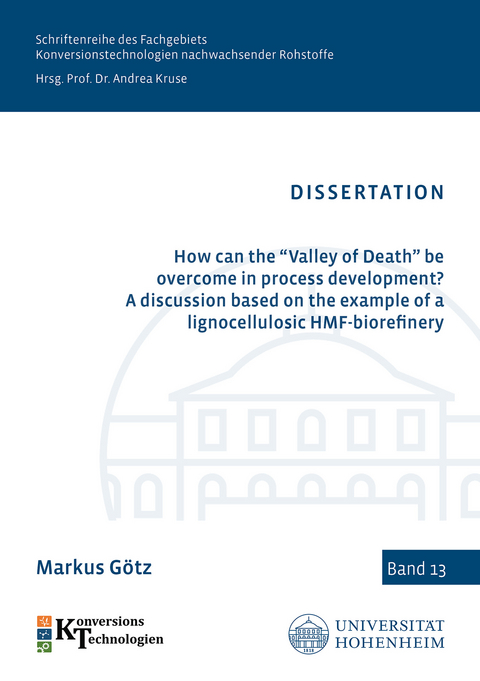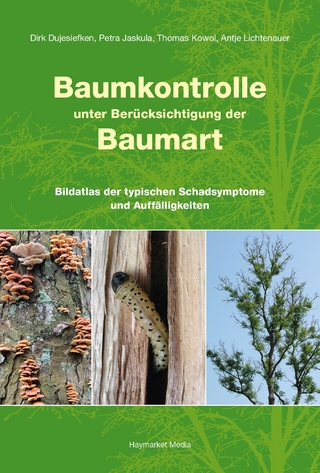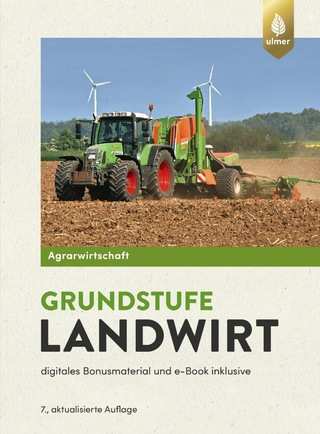
How can the “Valley of Death” be overcome in process development? A discussion based on the example of a lignocellulosic HMF-biorefinery
Seiten
2025
Shaker (Verlag)
978-3-8440-9678-1 (ISBN)
Shaker (Verlag)
978-3-8440-9678-1 (ISBN)
- Noch nicht erschienen (ca. Januar 2025)
- Versandkostenfrei innerhalb Deutschlands
- Auch auf Rechnung
- Verfügbarkeit in der Filiale vor Ort prüfen
- Artikel merken
To tackle the climate crisis, greenhouse gas emissions from fossil sources must be stopped, and biobased chemicals and materials must be promoted. This requires a transformation from a petroleum-based economy to a bioeconomy. In the chemical industry, this shift has been referred to as “Green Chemistry” since the 1990s, but only a small fraction of chemicals are currently biobased. This dissertation examines, using the example of a lignocellulose biorefinery that produces platform chemicals like hydroxymethylfurfural (HMF) from Miscanthus, the obstacles to its implementation. A major challenge is the “valley of death,” caused by a lack of investment in technology transfer from research to practice.
Using business design and literature studies, it is shown that commercialization fails due to a lack of evidence for scalability, economic viability, and sustainability. The study tests the lignocellulose biorefinery concept for scalability and feasibility. Simulations demonstrate scalability. A techno-economic analysis (TEA) considers the necessary biomass supply and refutes concerns about biomass availability. The work also addresses the economic viability of the products. A value-based pricing model shows how higher prices for biobased chemicals can be justified. The environmental sustainability is evaluated through a life cycle assessment (LCA), which identifies Miscanthus as more advantageous compared to fructose.
By integrating transdisciplinary methodologies, including process engineering, chemistry, agricultural sciences, economics, and innovation management, a comprehensive concept for a biorefinery is developed. This provides a foundation for attracting investors and partners and bringing innovative technologies into practice.
Using business design and literature studies, it is shown that commercialization fails due to a lack of evidence for scalability, economic viability, and sustainability. The study tests the lignocellulose biorefinery concept for scalability and feasibility. Simulations demonstrate scalability. A techno-economic analysis (TEA) considers the necessary biomass supply and refutes concerns about biomass availability. The work also addresses the economic viability of the products. A value-based pricing model shows how higher prices for biobased chemicals can be justified. The environmental sustainability is evaluated through a life cycle assessment (LCA), which identifies Miscanthus as more advantageous compared to fructose.
By integrating transdisciplinary methodologies, including process engineering, chemistry, agricultural sciences, economics, and innovation management, a comprehensive concept for a biorefinery is developed. This provides a foundation for attracting investors and partners and bringing innovative technologies into practice.
| Erscheint lt. Verlag | 28.1.2025 |
|---|---|
| Reihe/Serie | Schriftenreihe des Fachgebiets Konversionstechnologien nachwachsender Rohstoffe ; 13 |
| Verlagsort | Düren |
| Sprache | englisch |
| Maße | 148 x 210 mm |
| Gewicht | 225 g |
| Themenwelt | Weitere Fachgebiete ► Land- / Forstwirtschaft / Fischerei |
| Schlagworte | Biobased chemicals • Biorefinery • Business Design • hmf • process development |
| ISBN-10 | 3-8440-9678-7 / 3844096787 |
| ISBN-13 | 978-3-8440-9678-1 / 9783844096781 |
| Zustand | Neuware |
| Informationen gemäß Produktsicherheitsverordnung (GPSR) | |
| Haben Sie eine Frage zum Produkt? |
Mehr entdecken
aus dem Bereich
aus dem Bereich
Buch | Hardcover (2023)
DLG-Verlag
79,90 €
Buch | Hardcover (2023)
Haymarket Media (Verlag)
31,80 €


